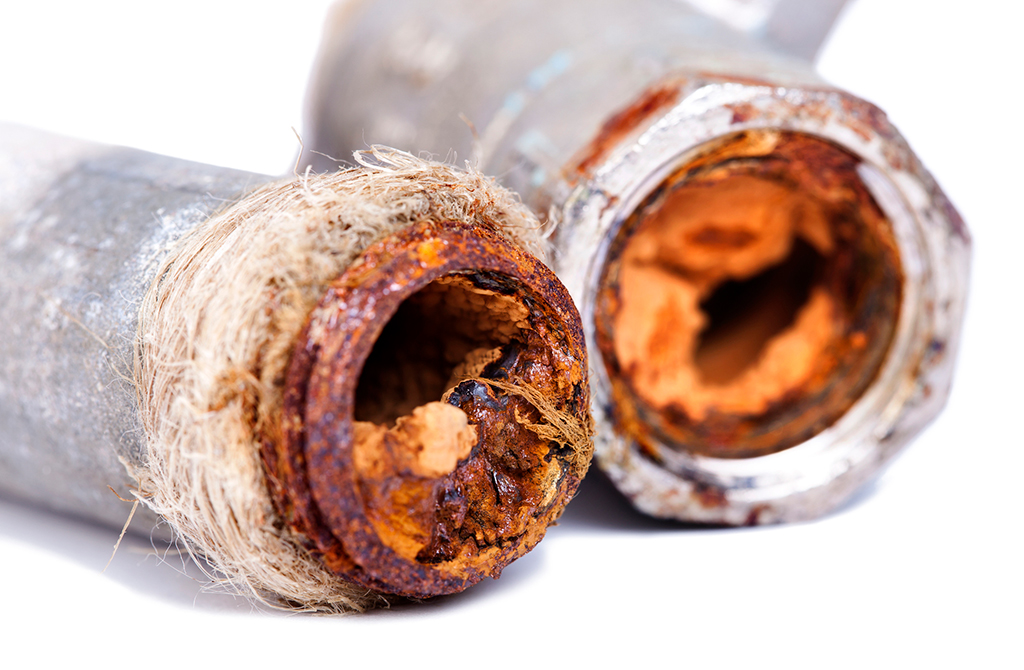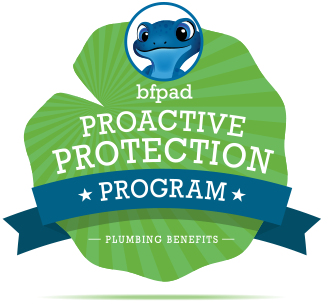
Plumber Tips: Is Repiping Right For My Home? | Helotes, TX
Photo By eldadcarin at istock
Regular maintenance from a plumber is an important responsibility for every homeowner in Helotes, TX. A home’s plumbing is supposed to deliver clean water to faucets, appliances, and other fixtures. We’re very fortunate to live in Helotes, TX, where we can expect a steady supply of clean water. People in many parts of the world don’t have reliable access to clean water, and we should never take it for granted. Although homeowners aren’t responsible for the public water supply, we do our part by taking care of the plumbing in our homes.
Homeowners don’t usually look forward to repiping. It’s a sizable investment, but repiping can offer peace of mind. Preventative repiping can significantly reduce the risk of multiple repairs and potential water damage in the future. Repiping is definitely not a DIY project. Replacing an entire plumbing system is a complex process. Plumbers sometimes make such complex jobs look easy, but that’s because of their education, training, experience, and tools. Ask your plumber how repiping can help you with these common plumbing issues.
Poor Water Quality
Corroded, broken, and worn-out pipes can contribute to poor water quality. Clean, fresh water is important, and subpar water quality can have an impact on many aspects of daily life. Plain drinking water can have an unpleasant taste, and foods and beverages made with tap water may not taste right. Clothing may come out of the washing machine looking dingy and dull, while dishes can have water spots and murky areas. Poor water quality can irritate skin and leave your hair feeling rough and dry. High mineral content and other impurities in the water can also leave stains on plumbing fixtures, including bathtubs, showers, sinks, toilets, and faucets.
Addressing the underlying cause of poor water quality is the best way to improve the situation. You can call a plumber in Helotes, TX to find leaks, fix or replace cracked or broken pipes, remove clogs, clean drains, and address other problems caused by worn-out pipes. Repiping is a much bigger task, but it may be the best option for older plumbing systems. Instead of constant spot repairs, all of the old pipes are removed and replaced with a new, intact plumbing system. Replacing old plumbing with pipes made of high-quality materials, such as copper, PEX, or CPVC, can even increase the value of your home.
Abnormal Water Characteristics
Water shouldn’t have a noticeable smell. Any odor comes from debris, rust, dirt, bacteria, minerals, and other contaminants. Abnormalities can affect the taste as well. Clean water is transparent. A murky appearance or reddish-brown color may come from corroded pipes. Rust flakes away from corroded pipe surfaces are carried along with flowing water and produce a red or brown tint. You may even see small pieces of rust in the water.
Sometimes discoloration is very faint and you may not notice it until discolored spots appear on counters, appliances, plumbing fixtures, dishes, or clothing. Call your plumber as soon as you notice discoloration in the water or anything that comes into contact with tap water. Sometimes abnormalities, such as an odor, strange taste, or murky appearance, are very subtle and hard to pin down. It may be easy to dismiss subtle changes or convince ourselves that we didn’t really notice anything. Don’t doubt your own perceptions. Call a plumber at the first sign of a problem. The situation may turn out to be harmless, but it’s better to be safe than sorry.
Lead Toxicity
An additional concern may exist if your home was built before 1950 and still contains the original plumbing. Lead is a well-known toxin now, but that wasn’t always the case. Lead from pipes can dissolve in water and push lead levels above safe limits for drinking water. The Environmental Protection Agency places the maximum contaminant level for lead at 0.015 milligrams per liter. If the concentration of lead in your water is under the maximum value, you can probably leave the pipes in place. There isn’t much choice other than replacing the pipes if the lead concentration is above the safe limit. Repiping may be necessary even at safe levels if you want to sell the house. A lot of potential buyers won’t even consider buying a home with lead pipes.
Low Water Pressure
You may have low water pressure if water suddenly starts to trickle out of taps instead of flowing in a steady stream. It may take longer to fill glasses or bowls with water. Bathing can be a challenge if water dribbles out of the showerhead. Lots of things can cause low water pressure. Sometimes it’s a simple issue like using too many appliances at once. There may not be enough water to go around if the washing machine and dishwasher are running while someone is taking a shower.
Loss of pressure can also be related to old pipes. Corroded pipes are very vulnerable to cracks, pinhole leaks, and clogs. Damaged underground pipes are a challenge because it’s hard to see or access them to locate a leak or remove clogs. Call a plumber to find and repair the problem. Low water pressure is annoying, but the cause of low pressure is probably contributing to other problems too.
Hidden Leaks
Old and worn-out pipes within walls present special challenges. Leaks within walls are hidden and may not be noticed until the water bill shoots up. Even if a constant dripping noise is obvious, it’s still hard to pinpoint the source of the noise. A plumber can find the leaky pipe and repair or replace it, but that may not be the end of the problem. If one pipe is worn-out and damaged, other pipes are probably in similar condition. You may need to think about repiping if more leaks occur in other places. Water stains and damp areas on the ceiling or walls are also signs of a leak. Call a plumber immediately if you see water pooling or dripping within your home, even if you have to call for emergency plumbing services.
Repiping Misinformation
There are many myths floating around about repiping. Many of these myths were true at one time, but plumbing technology continuously changes and advances. A common misconception is that repiping takes weeks. It certainly seems like removing every old pipe and replacing them with new pipes would be a time-consuming and labor-intensive process. However, plumbers can complete some repiping jobs for one or two-story homes in just a few days. This doesn’t mean that every job is completed so quickly. A wide range of factors determines how much time and work is necessary, but your plumbers can evaluate your home’s plumbing and give you an estimate so you can make informed decisions.
Another myth is that repiping has to be done regularly. A new plumbing system installed by professional plumbers should last for decades, especially if pipes and fixtures are made of durable material. Homeowners don’t need to consider repiping unless they’re dealing with widespread plumbing problems. As a general rule, you may want to consider repiping if your plumbing was installed over 15 years ago. This is just a rough estimate though. Your plumbing may last much longer than 15 years Consult a plumber to evaluate the overall condition of your plumbing and the possible need for repiping in the future.
Types of Plumbing Pipes
Cast Iron
Cast iron is frequently associated with strong, durable products, such as cast iron skillets or cast iron pipes. Although cast iron pipes do have many benefits, they have some downsides as well. Rust accumulation in cast iron pipes is known as tuberculation. Small, superficial rust spots may be a minor cosmetic issue. However, rust doesn’t just stop and remain static on a pipe or any other metal structure. Rust spreads along the surface and eats through pipe walls. Unchecked rust will corrode pipe walls and eventually compromise the structural integrity of the pipe. Corroded pipes are vulnerable to hairline cracks, fractures, and pinhole leaks, but small leaks can accelerate corrosion and lead to much larger leaks in a relatively short period of time.
PVC
The popularity of cast iron pipes fell in the 1970s, although cast iron was still used in some houses. PVC pipes overtook cast Iron as the most popular residential pipe material. PVC pipes are now one of the most common materials used in waste or drain pipes and residential plumbing. They’re lighter than most other pipes and easier to install and use than galvanized steel or other types of metal. Soldering is nearly unavoidable when metal pipes are installed, but PVC pipes are connected with solvents and glue. The diameter of PVC pipes is usually clearly written on the white surface. A PVC pipe can also be used as a stack, which is a pipe that protrudes from a roofline but doesn’t supply water.
PEX
PEX, cross-linked polyethylene, pipes are a relatively new type of pipe designed for durability and longevity. Installation of PEX pipes generally takes less time than installing copper or iron pipes. Rapid installation is possible because PEX pipes are color-coded and easily connected to each other without soldering or glue. The flexible polyethylene material is easy to cut to the desired length. This flexibility also lets PEX contract and expand, which makes frozen PEX pipes less likely to burst open. PEX is a good choice in places where extreme temperature fluctuations are possible.
ABS
ABS pipes are similar to PVC, but all ABS pipes are black. They’re commonly used for vents and drains. Some plumbing codes ban ABS or limit it to a few isolated uses. Your plumber knows whether ABS is permitted and how the material can be used in Helotes, TX. ABS is actually an older type of PVC, and the material isn’t used very often in homes anymore. Homeowners with ABS pipes frequently choose to have a plumber replace them with PVC.
Copper
Copper pipes are very common and recognizable in residential plumbing. The metal is durable, efficient, and easily handled. Flexible copper pipes are ideally suited for short distances and running water into refrigerators and heaters. As the name implies, flexible copper pipes can be bent to accommodate corners and maneuver into cramped spaces. The main disadvantage of flexible copper is that it doesn’t withstand extreme temperatures well, so it isn’t suited for outdoor use in Helotes, TX. Rigid copper pipes are corrosion-resistant and tend to be longer and thicker than flexible copper. Copper pipes may need to be soldered at connection points. Always hire a professional plumber to install or repair copper pipes. Some soldering compounds contain lead, but the risk of lead leaching into the water supply can be avoided with a low-lead or silver-based solder.
Galvanized Steel
Galvanized steel pipes are also commonly seen in older homes. Steel pipes are thicker, heavier, and more durable than most other pipe materials. The pipes are threaded at both ends and joined with connecting joints. Most galvanized pipes have a metal layer coating. The coating may rust, but it protects the pipe itself from corrosion.
The presence of rust on the outside of a steel pipe isn’t necessarily a problem, but the coating wears away eventually. Discolored water and rust particles are a sign that steel pipes have started to rust. Steel pipes aren’t used very often in new plumbing. Although steel is a durable material, steel pipes are also heavy and hard to manage. This makes it difficult to replace or repair steel plumbing pipes.
The team of licensed plumbers at bluefrog Plumbing + Drain of San Antonio is always available to help homeowners with plumbing issues in Helotes, TX. Call bluefrog to schedule an appointment if you notice any problems with your water or pipes. Our friendly, experienced plumbers can also inspect your home and answer any questions about repairs or repiping.











